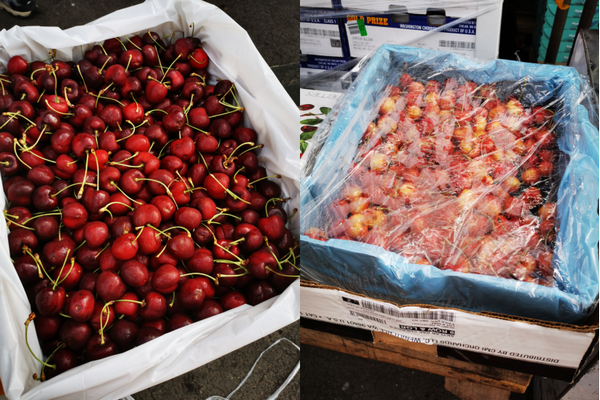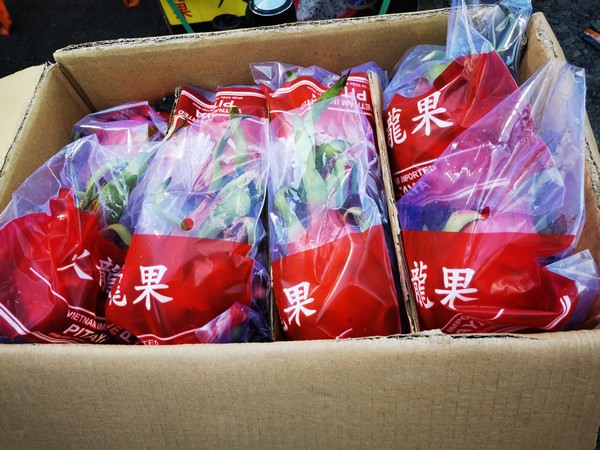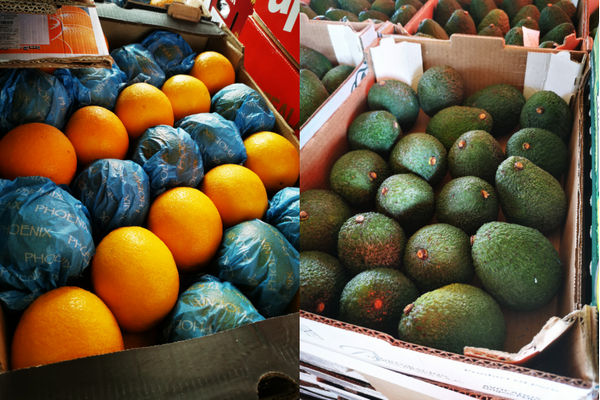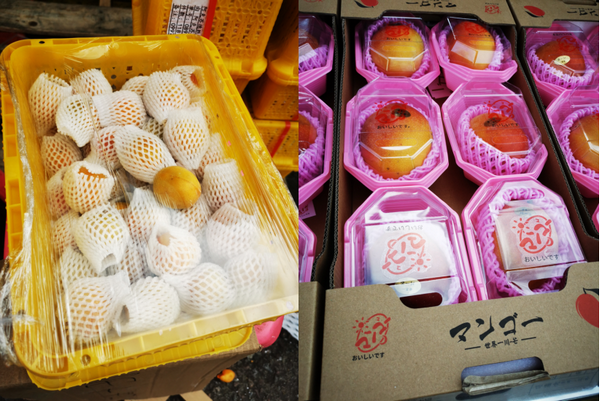As the production season develops, more American Washington cherries have arrived, including the "Rainier" yellow cherry; a small number of Canadian cherries are already on the market. In addition, South African oranges entered the market, while Vietnamese dragon fruits are relatively less.
 Left: Washington red cherries; Right: Skylar Rae cherries
Left: Washington red cherries; Right: Skylar Rae cherries
The arrival of Washington cherries includes Santina, Chelan, Coral and other varieties, as well as Rainier yellow cherries. Merchants said that the quality of the current arrivals is generally stable, but the market price is lower than last year, which may be related to the increase in the volume this year and the lack of market demand. It is understood that in the same period last year, the prices were about ¥300-400, but now the prices are about ¥200-300, with a decrease of 20% or more.
The situation is similar for the Rainier cherries, which were more expensive in the past. Some merchants said that due to the price reduction, it is doable to sell the cherries now. A small amount of the high-end Skylar Rae variety is on the market, with ideal taste, sweetness and firmness. The 4kg pack of 9-row sells for about ¥900. Merchants say that due to the high price, the current sales are slow.
Canadian cherries were just launched on the market, and merchants mentioned that due to the current limited supply, the taste is ideal, and the sales are smooth.
 Vietnamese dragon fruits
Vietnamese dragon fruits
The arrival of Vietnamese dragon fruits in the past two months has decreased significantly compared to the past. According to the merchant, the arrival at this time in previous years has been quite large, but this year's arrival is relatively small, which has caused the price to rise. In the same period last year, the price of second-grade fruit was about ¥95/piece, and it has now increased to ¥145/piece. Due to the small volume, the sales are generally smooth at present. Some merchants believe that the lack of arrivals may be related to the still strict entry requirements for dragon fruit and the slow customs clearance. Some merchants also estimate that local farmers in the production area will switch to more profitable durians, which affects the production of dragon fruits.
 Left: South African oranges; Right: Imported avocados
Left: South African oranges; Right: Imported avocados
As for other imported fruits, South African oranges are already on the market. Currently, the arrival is small, and the price is roughly the same as the initial stage of the previous years. Because it is in the early stage, the taste is relatively mild. After a large number of imported avocados arrived some time ago, the price dropped sharply, but the recent arrival has decreased, so the price has risen slightly. The prices of Australian mandarins and South African mandarins, which are also in the early stage, are basically the same as last week, and the fruits are arriving at the market continuously.
 Left: Xinjiang Diaogan apricots; Right: Sichuan mango boutique packaging
Left: Xinjiang Diaogan apricots; Right: Sichuan mango boutique packaging
As for the domestic fruits, the Diaogan apricots from Xinjiang are in the production season. According to the merchants, due to the snowfall in March and April this year, the weather has affected the production and size of Diaogan apricots, reducing the proportion and output of large fruits that sold better in the past, so the price has risen. Last year, the price of large fruits was about ¥50/piece, and now it needs to sell for ¥70/piece. Merchants estimate that the upcoming Xinjiang fruits such as grapes and plums may be affected.
